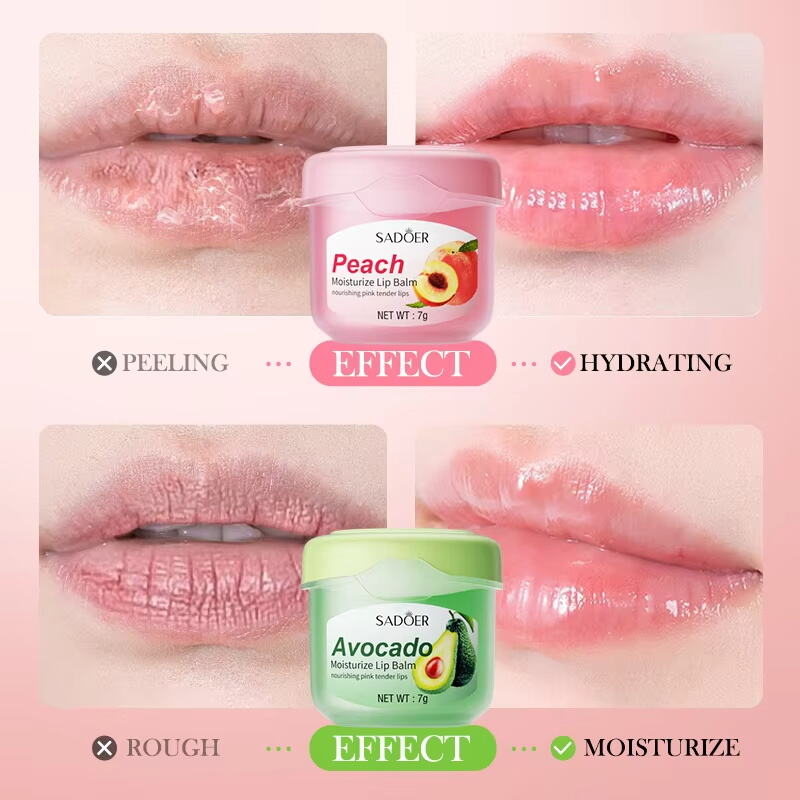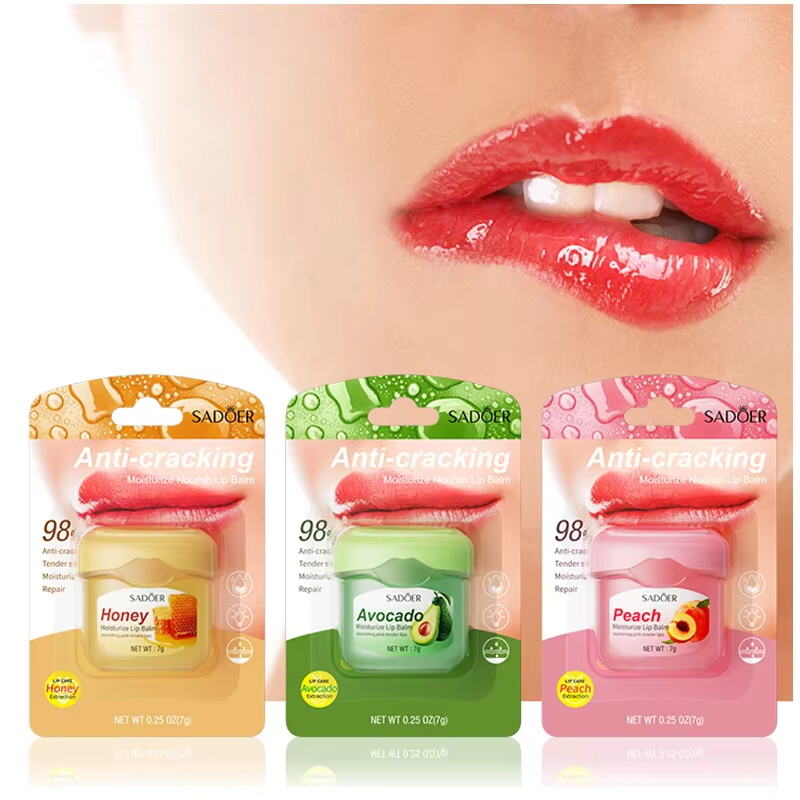Foundations of Thoughtful Lip Care
Healthy lips are more than a cosmetic luxury — they are a marker of skin barrier integrity and everyday comfort. A lip scrub is a targeted tool that removes dead skin, improves texture, and prepares the tissue for hydration and treatment. Incorporating a lip scrub into a regular care routine restores smoothness, helps active ingredients penetrate, and reduces recurring dryness. This article explains where a lip scrub fits into daily and seasonal care, how it interacts with other products, what practical techniques deliver the best results, and which ingredients matter most for efficacy and safety.
Why lips need targeted care
Lips differ from the rest of facial skin: they are thinner, have fewer protective oil glands, and are exposed constantly to environmental stressors like UV, wind, and saliva. Because of this anatomy, flakes and rough patches accumulate quickly and trap moisture-preventing barriers. A lip scrub physically removes that barrier. By doing so, a lip scrub not only immediately improves feel and appearance, it creates a receptive surface for moisturizers and advanced actives to work more effectively.
The lip scrub’s functional goals
At its core, a lip scrub aims to (1) exfoliate gently, (2) soothe and hydrate, and (3) leave a protective residue or be followed by an occlusive that seals moisture. A good lip scrub balances mechanical action with emollients and humectants so that the procedure leaves lips comfortable rather than raw. Repeated, correctly performed sessions with a lip scrub reduce the cycle of build-up → flaking → further dehydration that many people experience.
Integrating a Lip Scrub into Daily and Weekly Care
Timing and frequency that work
How often should a lip scrub be used? For most people, a lip scrub two to three times per week is ideal. This frequency removes dead skin without disrupting the delicate barrier. Sensitive lips benefit from once-weekly use, while chronically flaky lips may begin with twice-weekly sessions and then taper. Time your lip scrub sessions to align with deeper restorative steps: evening routines are especially effective because they allow richer overnight treatments to restore barrier function after exfoliation.
Pre- and post-scrub sequencing
The sequence matters. Begin by cleansing lips and hands, then apply a small amount of lip scrub and use gentle circular motions for 20–60 seconds. Rinse thoroughly and immediately apply a hydrating serum or balm containing humectants (glycerin or hyaluronic acid) followed by an occlusive (beeswax, petrolatum, or a dense plant butter). During daytime, choose a balm with SPF to protect the newly exposed skin. This simple sequence—exfoliate, hydrate, seal—maximizes the lip scrub’s benefits and minimizes irritation risk.

Cosmetic and Functional Benefits of Regular Lip Scrubs
Makeup application and pigment performance
A frequently noted practical advantage of a lip scrub is improved makeup finish. Dry patches cause uneven coverage and cause lipstick to flake into lines; a lip scrub creates an even surface so color lays down smoothly and lasts longer. For long-wear products or bold pigments, performing a lip scrub shortly before application (10–20 minutes, allowing moisturizers to absorb) gives the truest color payoff and a clean edge.
Improved hydration and tolerance of products
After dead skin is removed, lip treatments penetrate more uniformly. A lip scrub can transform the performance of a standard balm into a restorative treatment because humectants and lip-repair ingredients reach deeper layers. Over weeks, this deeper hydration improves barrier resilience and reduces the incidence of painful cracks and fissures.
Health and Safety Considerations When Using a Lip Scrub
Avoiding over-exfoliation and microtrauma
A lip scrub must be used with restraint. Excessive pressure, too-coarse particles, or daily mechanical exfoliation can produce microtears, inflammation, and sensitivity. Use light pressure and brief strokes, and pick a lip scrub with finely graded particles. If lips become red or sore, pause exfoliation and rely on soothing, fragrance-free balms until recovery. A good lip scrub should never leave lips raw.
Contraindications and special cases
Do not use a lip scrub over active infections such as cold sores (herpes simplex), open wounds, or severe dermatitis. Exfoliating over active lesions spreads pathogens and delays healing. Users of retinoids or certain topical sensitizing agents should consult a clinician before introducing a lip scrub because combined effects can increase sensitivity. Pregnant or breastfeeding users should avoid scrubs with untested high-dose essential oils and stick to gentler, simple formulations.
Choosing and Evaluating Lip Scrub Formulations
Exfoliant types and textures in lip scrubs
Effective lip scrubs rely on safe, biodegradable particles. Common choices include fine sugar, jojoba esters or beads (rounded and smooth), finely ground rice, and other plant powders. Sugar offers a dissolving action that lessens abrasion as it hydrates; jojoba beads are spherical and gentle; plant powders provide very fine mechanical action ideal for sensitive clients. Avoid sharp shell fragments or jagged salts for daily lip care: they are too aggressive.
Supportive ingredients to look for
A high-quality lip scrub pairs the abrasive with emollients (jojoba oil, shea butter, squalane) and humectants (glycerin, honey, hyaluronic acid) to soothe and hydrate immediately after exfoliation. Antioxidants like vitamin E and calming botanicals (chamomile, aloe) can reduce inflammation risk. Preservatives or anhydrous formulations matter for microbial safety—water-containing scrubs need appropriate preservatives to avoid contamination, while oil-and-sugar scrubs tend to be more shelf-stable.
Practical Techniques and Tools to Maximize Lip Scrub Outcomes
Hands-on application tips
Use a pea-sized amount and move in gentle circular motions. Keep sessions brief—about 30–45 seconds per application—so you remove flaky skin without abrading the new tissue. Use a clean spatula to extract product from jars to avoid contamination. After rinsing, pat dry and immediately apply a rich balm. For travel, single-use packets or compact tubes limit contamination risk and maintain hygiene.
Devices and alternatives
For those preferring tools, a soft, clean toothbrush can be used extremely gently as a mechanical alternative, but caution is essential: toothbrush bristles can be too stiff if pressure is excessive. Electric exfoliating tools designed for facial skin are generally not recommended for lips due to higher aggressiveness. Stick to manual lip scrubs formulated for delicate tissue.
Addressing Common Problems and Troubleshooting
Persistent flaking despite a lip scrub
If flakes persist after regular use, evaluate systemic and environmental factors: dehydration, nutritional deficiencies (B vitamins), medications, or underlying dermatologic conditions can impede recovery. Increasing topical hydration and consulting a clinician may be necessary—lip scrubs help but are not a cure-all when systemic drivers exist.
Managing sensitivity and allergic reactions
If irritation or contact dermatitis occurs, stop the product immediately and switch to a bland, fragrance-free balm containing minimal actives. Reintroduce exfoliation later with a milder product or after dermatologic clearance. Patch testing new lip scrubs behind the ear reduces the risk of widespread reaction.
Lip Scrub, Sustainability, and Responsible Choices
Avoiding microplastics and prioritizing biodegradable abrasives
Environmental responsibility means choosing lip scrubs without plastic microbeads. Favor sugar, jojoba esters, or plant-derived powders that biodegrade. They perform well and align with sustainable packaging and disposal.
Packaging and preservative considerations
Compact recyclable packaging or refillable formats reduce waste. For water-containing scrubs, ensure the brand uses responsible preservatives and provides a clear shelf-life. Anhydrous sugar-and-oil scrubs often have simpler preservation needs and longer shelf lives.
Advanced Uses and Regimens for Specific Goals
Using a lip scrub to support pigmentation or texture treatments
For pigmentation or collagen-targeting treatments, a lip scrub primes tissue so actives are more effective. Use exfoliation moderately and time actives appropriately—avoid combining a strong chemical exfoliant and a mechanical lip scrub on the same day to prevent over-sensitization.
Seasonal adjustments and special care
In winter or high-altitude travel, follow lip scrub sessions with occlusive-rich night balms and increase protective SPF-level daytime balms. During humid seasons, scale back frequency if lips remain supple to avoid over-exfoliation.
Simple, Effective Lip Scrub Routine Examples
Weekly maintenance routine
Evening routine (2–3× weekly): cleanse lips, gently apply lip scrub for 30–45 seconds, rinse, apply a hydrating serum with humectants, follow with a dense occlusive balm. Daytime: hydrating balm with SPF. Repeat as needed based on environment and activity.
Intensive repair routine
If lips are severely chapped: start with once-weekly gentle lip scrub, daily barrier repair balm morning and night, avoid harsh actives until healing occurs. Reassess at two weeks and increase exfoliation frequency only if improvement is consistent and irritation-free.
FAQ
How often should I use a lip scrub?
Most people benefit from using a lip scrub two to three times per week. Those with very sensitive lips should begin with once weekly and adjust according to how their lips respond.
Lip scrubs remove dead skin and increase product absorption, so overuse can cause irritation. Start slowly and observe your lips’ reaction.
Can I use a lip scrub if I have cold sores?
Do not use a lip scrub over active cold sores (herpes simplex) or any open lesions. Exfoliation can spread the virus and worsen symptoms. Wait until the area has fully healed before resuming exfoliation.
What should I apply after using a lip scrub?
After a lip scrub, apply a hydrating product containing humectants (glycerin or hyaluronic acid) and follow with an occlusive balm (beeswax, petrolatum, or rich plant butter) to lock in moisture. For daytime, choose a balm with SPF for protection.
Are homemade lip scrubs safe and effective?
Homemade lip scrubs can be effective if made with fine sugar and a stable oil, but they can vary in particle size and lack preservatives. Store homemade scrubs properly and use clean utensils to avoid contamination. For consistent performance and safety, many users prefer well-formulated commercial products.
Table of Contents
- Foundations of Thoughtful Lip Care
- Integrating a Lip Scrub into Daily and Weekly Care
- Cosmetic and Functional Benefits of Regular Lip Scrubs
- Health and Safety Considerations When Using a Lip Scrub
- Choosing and Evaluating Lip Scrub Formulations
- Practical Techniques and Tools to Maximize Lip Scrub Outcomes
- Addressing Common Problems and Troubleshooting
- Lip Scrub, Sustainability, and Responsible Choices
- Advanced Uses and Regimens for Specific Goals
- Simple, Effective Lip Scrub Routine Examples
- FAQ

